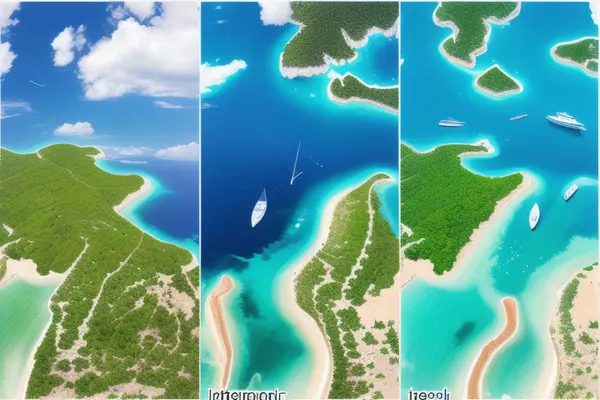Table of Contents:
Introduction to the Croatian Islands
The Croatian islands are a paradise for travelers seeking sun, sea, and culture. With over 1,000 islands scattered along its Adriatic coastline, Croatia offers an array of experiences that cater to all tastes. However, understanding the croatia islands climate is crucial in planning your trip effectively.
A Glimpse into the Climate of Croatian Islands
The weather on these beautiful islands varies significantly throughout the year. The coastal regions enjoy a Mediterranean climate with hot summers and mild winters while inland areas have a continental climate characterized by cold winters and warm summers.
Weather Pros and Cons for Visiting Croatian Islands
| Time of Year | Pros | Cons |
|---|---|---|
| Spring | Mild temperatures, fewer tourists, lush landscapes | Possible heavy rain, some places may not be fully open for the season |
| Summer | Warm sea temperatures, most tourists, most places are open | High temperatures, crowding in popular places |
| Autumn | Moderate temperatures, less crowded than summer | Rain can start to increase late in the season, some places begin to close for the winter |
| Winter | Fewer tourists, peaceful and quiet, lower prices | Cold sea temperatures, many places are closed for the season |
Navigating through Seasons: When to Visit?
Determining when to visit depends largely on what you want from your holiday.
Spring (March - May)
In springtime, temperatures start rising but remain comfortable enough for outdoor activities such as hiking or cycling. This season also sees fewer tourists making it ideal if you prefer less crowded places.
Summer (June - August)
If beach lounging and water sports are high on your agenda then summer is undoubtedly the best time to go! Expect long sunny days with average temperatures hovering around 30°C during peak months like July and August. Do note though that this period attracts most visitors so be prepared for bustling beaches!
Fall (September - November)
Fall brings cooler weather which makes sightseeing more enjoyable without having to endure scorching heat. It's also grape harvest season – perfect timing if wine tasting interests you!
Winter (December - February)
This might not be everyone’s first choice due to colder temperatures and shorter days. However, if you're a fan of winter sports or simply enjoy the tranquility that comes with off-peak travel, then this could be your ideal time.
Understanding Regional Variations
The croatia islands climate can vary from one island to another due to their geographical locations. For instance, southern islands like Hvar and Korčula tend to have longer summers compared to northern ones such as Krk and Cres.
Hvar: The Sunniest Island
Hvar is known for its sunny weather boasting an average of 7 hours sunshine per day even in December! This makes it a great year-round destination.
Korčula: A Blend of Sunshine and Breeze
Korčula enjoys plenty of sun too but also benefits from cooling breezes which make summer heat more bearable here than on other islands.
Krk & Cres: Cooler Northern Climate
In contrast, Krk and Cres experience cooler climates especially during winters when snowfall isn't uncommon!
A Final Word on Croatia Islands Climate
To sum up, understanding the croatia islands climate will help you choose the best time for your visit based on what activities interest you most. Whether it's basking under the Mediterranean sun or exploring historical sites without breaking into sweat – there’s always something special waiting for you at these Croatian gems!
Croatian Islands Weather Guide: Optimal Visit Times
When is the best time to visit the Croatian Islands?
The best time to visit the Croatian Islands would be during the late spring or early fall when the weather is pleasant and the crowd is relatively less.
What is the weather like in summer?
In summer, the Croatian Islands experience warm and sunny weather with average temperatures ranging from 26 to 30 degrees Celsius.
Does it rain a lot in the Croatian Islands?
The Croatian Islands witness more rain during the colder months, however, the amount of rainfall is relatively lower than many other European destinations.
Is winter a good time to visit the Croatian Islands?
Winter can be quite cold and many tourist services remain closed. However, if you prefer a peaceful trip and enjoy colder temperatures, it could be an ideal time for you.
What should I pack for my visit?
It would depend on the season of your visit. For summer, bring light clothing, hats and sunscreen. For spring or fall, pack some light layers and include a waterproof jacket in your baggage.





